ALSO BY THE AMERICAN HEART ASSOCIATION
American Heart Association Healthy Family MealsAmerican Heart Association Complete Guide to Womens Heart HealthAmerican Heart Association Low-Fat, Low-Cholesterol Cookbook, 4th EditionAmerican Heart Association No-Fad Diet, 2nd EditionThe New American Heart Association Cookbook, 8th EditionAmerican Heart Association Quick & Easy MealsAmerican Heart Association One-Dish MealsAmerican Heart Association Low-Calorie CookbookAmerican Heart Association Low-Fat & Luscious Desserts Copyright 1990, 2001, 2006, 2011 by American Heart Association No book, including this one, can ever replace the services of a doctor in providing information about your health. You should check with your doctor before using the information in this or any other health-related book. All rights reserved.
Published in the United States by Harmony Books, an imprint of the Crown Publishing Group, a division of Penguin Random House LLC, New York.
www.crownpublishing.com Harmony Books is a trademark and the Circle colophon is a registered trademark of Penguin Random House LLC. Previous editions of this work were published in the United States by Times Books, New York, in 1990, and by Clarkson Potter/Publishers, an imprint of the Crown Publishing Group, a division of Random House, Inc., New York, in 2001 and 2006. Your contributions to the American Heart Association support research that helps make publications possible. For more information, call 1-800-AHA-USA1 (1-800-242-8721) or contact us online at www.heart.org.
Library of Congress Cataloging-in-Publication Data
American Heart Association low-salt cookbook : a complete guide to reducing sodium and fat in your diet.4th ed.
p. cm.
Includes index.
1. Salt-free dietRecipes. I. American Heart Association. II.
Title: Low-salt Cookbook.
RM237.8.S73 2011
641.56323dc22 2010030166 ISBN: 978-0-307-58978-1 eISBN: 978-0-307-95333-9 Cover photography by Ben Fink
Cover design by Rae Ann Spitzenberger v3.1_r1
ACKNOWLEDGMENTS
American Heart Association Consumer PublicationsDIRECTOR : Linda S. Ball
MANAGING EDITOR : Deborah A. Renza
SENIOR EDITOR : Janice Roth Moss
SCIENCE EDITOR/WRITER : Jacqueline F. Haigney
ASSISTANT EDITOR : Roberta Westcott Sullivan
Recipe Developers Frank Criscuolo Nancy S. Hughes Ruth Mossok Johnston Jackie Mills, M.S., R.D. Kathryn Moore Carol Ritchie Christy Rost Julie Shapero, R.D., L.D.
Roxanne Wyss Nutrition Analyst Tammi Hancock, R.D. 
PREFACE
For more than 20 years, we have published the
American Heart Association Low-Salt Cookbook to help people cut back on the salt in their diets. During this time, food preferences and trends in eating habits have changed, and the recipes in this book have evolved along with the tastes of our readers. In this latest volume, you will find heart-healthy, low-sodium dishes from the previous editions plus more than 50 new recipesincluding Grilled Flank Steak and Asparagus with Couscous; Carrot, Edamame, and Brown Rice Skillet; and Slow-Cooker Moroccan Chickenthat feature todays most popular ingredients, cooking techniques, and international cuisines. What hasnt changed is the reason its so important to limit salt intake: For many people, eating too much sodium can raise blood pressure and even lead to high blood pressure, a disease that has serious consequences if left untreated. High blood pressure increases your risk of developing many health issues, especially cardiovascular problems such as heart disease, heart failure, and stroke.
Eating less sodium can help keep your blood pressure low. If you already have high blood pressure, you can often reduce it by eating less salt and making other smart diet and lifestyle changes. You may believe that if you dont have heart disease or high blood pressure, you dont need to worry about sodium, but that isnt true. According to statistics from the Centers for Disease Control and Prevention, almost 70 percent of all Americans should be eating lower levels of sodium; these people are especially susceptible to the harmful effects of eating too much sodium over time, even if they dont yet have high blood pressure. In fact, by age 50 every American has a 90 percent chance of developing high blood pressure, which, in turn, increases the risk for heart disease and stroke. Given these long-term consequences, reducing the amount of sodium in the food we eat should be a top health priority for most of us.
We understand that it can be a challenge to retrain your taste buds and change long-held habits. As the amount of sodium in the food supply has risen steadily over the years, gradually people have become used to saltier foods. As people eat out more and rely on commercially processed food instead of preparing meals from scratch, they have less control over how much sodium is in their diet. The end result is that many Americans are now eating twice the amount of sodium recommended by the American Heart Association. The link between a high sodium intake and its negative effects on the circulatory system has been firmly established. In response, federal agencies and the food industry are working toward reducing the sodium in processed food while keeping food safe and meeting consumers expectations for flavor.
It may take some time before manufacturers can deliver on all fronts, but, fortunately, you dont have to wait until then to make a dramatic impact on your health. The more you shop smart and cook thoughtfully, the more control you have over your food choices and the amount of sodium you consume. We encourage you to make the Low-Salt Cookbook your go-to guide to cut back on sodium while still enjoying the flavors of the foods you eat. ROSE MARIE ROBERTSON, MDChief Science OfficerAmerican Heart Association/American Stroke Association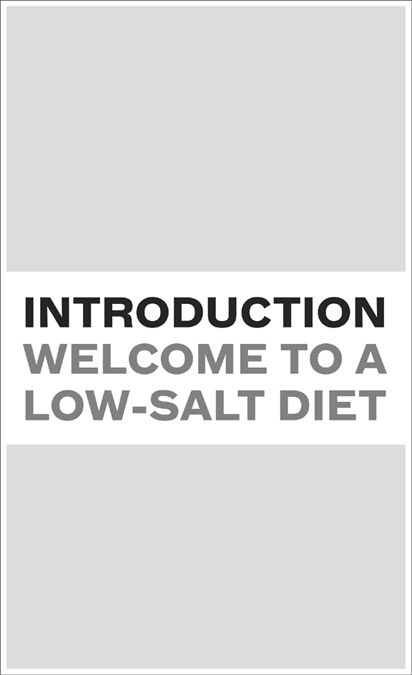 Perhaps youve been diagnosed with high blood pressure or have seen it rising over the last few years, maybe youre being proactive about your health because of a family history of high blood pressure, or perhaps your healthcare provider recently told you to start following a low-salt diet to avoid getting high blood pressure or going on medication. Whatever the reason, if youre looking for help on how to reduce the sodium in your diet and thereby manage your blood pressure, youve made an important first step by picking up this book.
Perhaps youve been diagnosed with high blood pressure or have seen it rising over the last few years, maybe youre being proactive about your health because of a family history of high blood pressure, or perhaps your healthcare provider recently told you to start following a low-salt diet to avoid getting high blood pressure or going on medication. Whatever the reason, if youre looking for help on how to reduce the sodium in your diet and thereby manage your blood pressure, youve made an important first step by picking up this book.
SO WHATS THE BIG DEAL
ABOUT A LITTLE SALT?
The truth of the matter is that most Americans consume
much more than just a little salt and much more than our bodies need.
The average persons sodium consumption is 3,400 milligrams a daymore than double what is recommended as a healthy level for all adults, regardless of their health status. So, how are we getting so much sodium in our diets? You may be surprised. Heres a breakdown of where most sodium comes from:



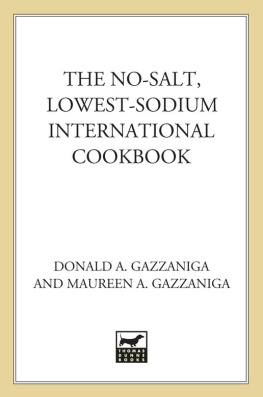
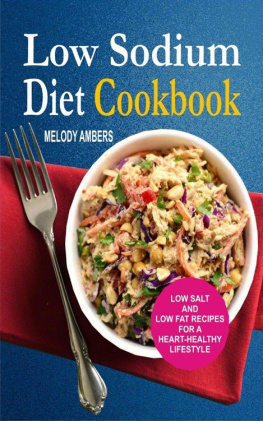
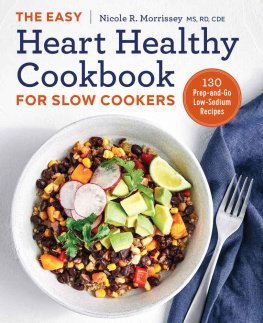
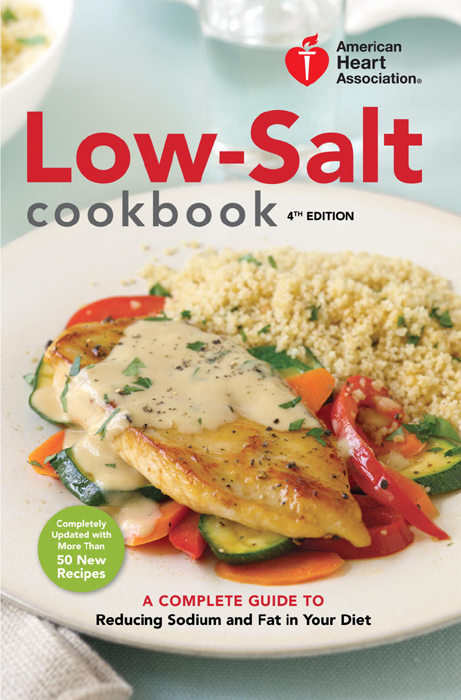
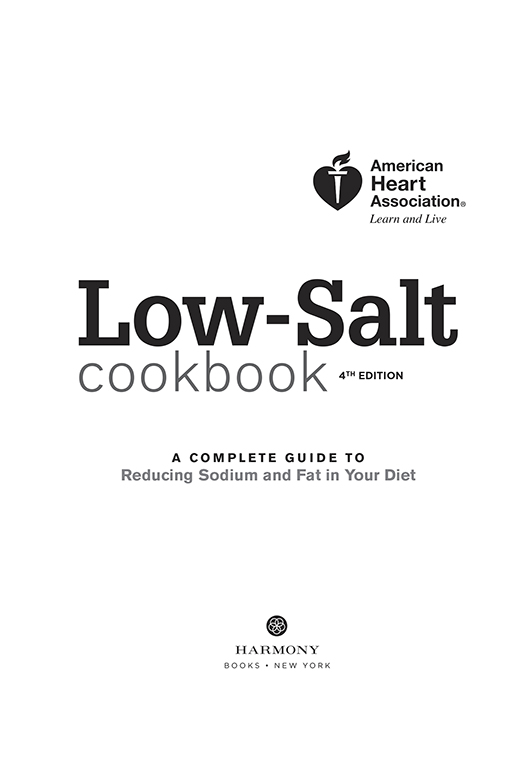

 Perhaps youve been diagnosed with high blood pressure or have seen it rising over the last few years, maybe youre being proactive about your health because of a family history of high blood pressure, or perhaps your healthcare provider recently told you to start following a low-salt diet to avoid getting high blood pressure or going on medication. Whatever the reason, if youre looking for help on how to reduce the sodium in your diet and thereby manage your blood pressure, youve made an important first step by picking up this book.
Perhaps youve been diagnosed with high blood pressure or have seen it rising over the last few years, maybe youre being proactive about your health because of a family history of high blood pressure, or perhaps your healthcare provider recently told you to start following a low-salt diet to avoid getting high blood pressure or going on medication. Whatever the reason, if youre looking for help on how to reduce the sodium in your diet and thereby manage your blood pressure, youve made an important first step by picking up this book.